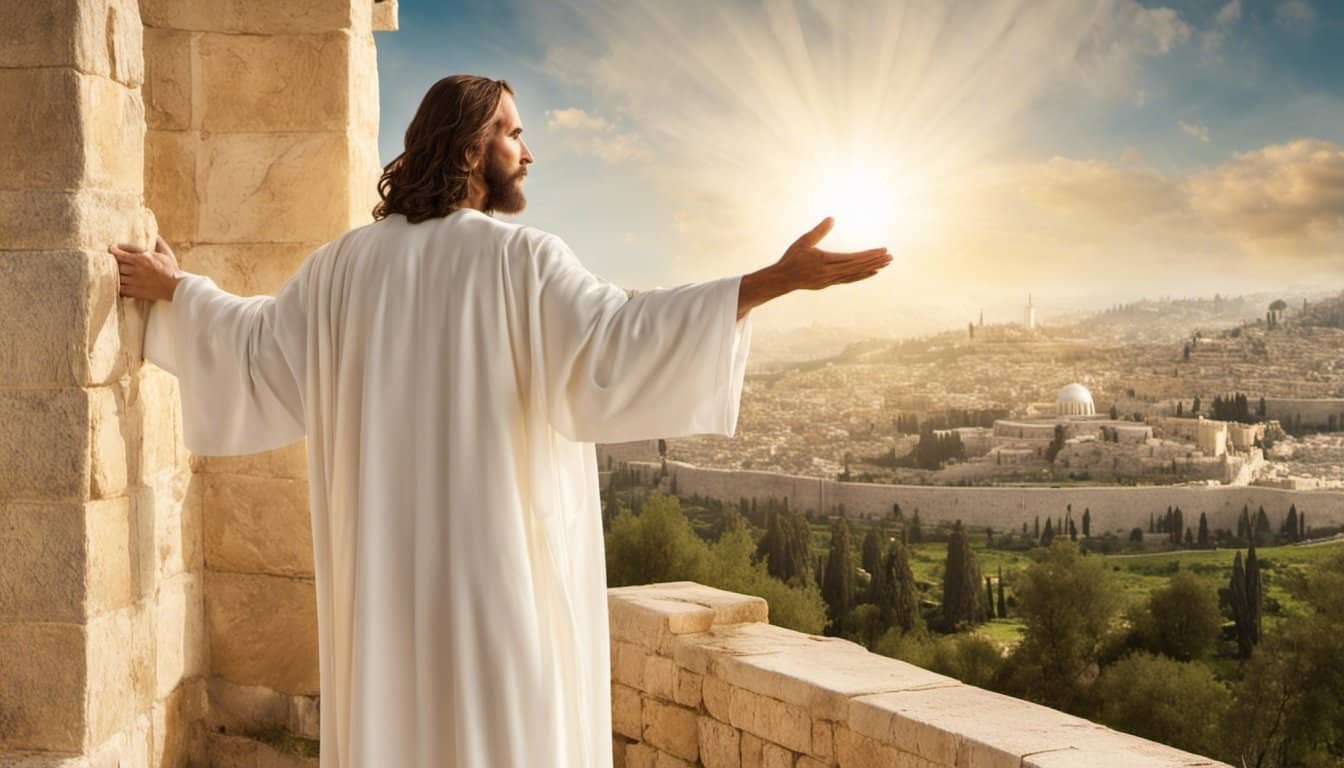The amillennial view offers an intriguing perspective on the concept of the millennium, questioning traditional interpretations of Christ’s reign. This belief holds that the “thousand years” mentioned in the Bible symbolizes the current church age rather than a literal future event.
By understanding this view, readers can gain insights into how amillennialists perceive God’s kingdom and Christ’s role in the world today.


As discussions about the end times continue to evolve, the amillennial approach presents an alternative that challenges popular ideas. It emphasizes spiritual reign instead of a physical ruling kingdom on earth.

Exploring this viewpoint not only enriches theological discussions but also affects how individuals engage with their faith and the world around them.
In this blog post, readers will discover the key elements that shape the amillennial perspective and the implications this belief has for understanding God’s kingdom and future events.
Key Takeaways
- The amillennial view interprets the millennium as the current church age.
- This belief shifts the focus from a future physical reign of Christ to His spiritual influence today.
- Understanding amillennialism impacts how one engages with faith and end-time discussions.
Understanding Amillennialism
Amillennialism offers a unique perspective on the millennium, viewing it as a spiritual reality rather than a physical event. It emphasizes the current reign of Christ and the significance of this age leading into the age to come.
Definition and Core Beliefs
Amillennialism believes that the “thousand years” mentioned in the Bible is symbolic. It refers to the period between Christ’s first and second comings.
In this view, the reign of Christ is happening now, through the church. Believers are said to live and reign with Christ spiritually. This contrasts with literal interpretations held by other views.
Amillennialists reject the idea of a future physical kingdom on Earth, but affirm the existence of two ages: this age and the age to come. They focus on the importance of faith and the present experience of God’s kingdom.
Amillennialism vs Premillennialism and Postmillennialism
Amillennialism differs significantly from both Premillennialism and Postmillennialism.
Premillennialism expects Christ to return before a literal thousand-year reign on Earth. In this view, there will be a future period of peace and righteousness.
Postmillennialism, on the other hand, anticipates that Christ will return after a golden age of Christian dominance. It holds that the church will gradually spread the Gospel and improve the world before Christ’s second coming.

These differences highlight diverse understandings of how and when God’s kingdom will be established. Amillennialism posits that these events are spiritual rather than tied to specific future occurrences.
Key Scriptures and Hermeneutical Principles
Several key scriptures support the amillennial view, including Revelation 20:1-6. This passage is crucial as it describes the binding of Satan and the reign of the saints.
Amillennialists interpret these verses figuratively. They see the binding of Satan as a current reality, allowing for the spread of the Gospel.
Hermeneutical principles play an essential role. Amillennialism emphasizes contextual reading of scripture. It stresses that apocalyptic literature often employs symbolic language.
This approach helps establish a spiritual understanding rather than a literal timeline of events.
Biblical Interpretation and Theological Framework
The amillennial view presents unique insights into the interpretation of Scripture concerning the millennial reign of Christ. Important aspects include how Revelation 20 is understood, the connection between Old Testament prophecies and New Testament fulfillments, and the role of the analogy of faith in eschatology.
Exegesis of Revelation 20
Revelation 20 discusses a thousand-year reign of Christ, which is central to various millennial views. In the amillennial interpretation, this period is seen not as a literal thousand years but symbolically.
It represents Christ’s reign in the hearts of believers during the current church age.
Key verses from Revelation 20 describe Satan being bound and the faithful reigning with Christ. This binding is understood as preventing Satan’s ultimate power to deceive nations.

Thus, the millennium is interpreted as a present reality rather than a future event of earthly prosperity.
Old Testament Prophecy and New Testament Fulfillment
Old Testament prophecies often speak of a messianic age. Many amillennialists believe these prophecies find their fulfillment in Jesus’ first coming.
He inaugurated the kingdom of God, bringing spiritual blessings now rather than deferring them to a future time.
For example, Isaiah’s prophecies of peace and justice relate directly to Jesus’ teachings in the New Testament. This connection emphasizes the belief that God’s promises are manifesting in the present through the church rather than waiting for a physical thousand-year reign.
The Analogy of Faith in Eschatology
The analogy of faith helps understanding Scripture within its unified message. This principle asserts that Scripture interprets Scripture, so more challenging passages like Revelation 20 should align with clearer teachings throughout the Bible.

In eschatology, this means that while Revelation might depict dramatic visions, these visions are consistent with God’s character and redemptive plan.
Amillennialists often lean on other scripture to reinforce that Jesus reigns spiritually now. They view prophetic symbols as reflections of God’s ultimate victory through Christ rather than fixed timelines.
The Nature and Timing of the Millennium
The amillennial view presents a unique understanding of the millennium, focusing on its spiritual significance and timing. This perspective contrasts with other beliefs about the millennial reign, which can shape how individuals interpret biblical texts.
Amillennial Perspective on the Millennial Reign
In amillennialism, the thousand-year reign of Christ is seen as a current, ongoing reality. It is not a future event but rather a spiritual kingdom that began with Christ’s resurrection.

According to this view, believers experience the millennial reign through their faith and relationship with Christ today.
This interpretation emphasizes that Christ rules from heaven, influencing the world through the church.
Followers believe that this reign will continue until Christ’s return at the end of the age, where final judgment will occur. This perspective encourages believers to live righteously, knowing they are part of this spiritual reign.
Contrast with Premillennial and Postmillennial Timelines
Amillennialism stands in contrast to premillennialism and postmillennialism in significant ways.
Premillennialists expect Christ’s return to happen before a literal thousand-year reign on Earth. They believe in a future that includes a physical kingdom where Jesus rules.

On the other hand, postmillennialists think that Christ will return after a period of peace and righteousness brought about by the church’s efforts.
In contrast, amillennialists argue that the millennium does not involve an earthly kingdom but is instead a present spiritual reality. This difference influences how each group understands biblical prophecies and the role of the church.
Amillennialism and the Two Ages Model
The amillennial perspective often includes the Two Ages Model, which divides history into two main periods: the present age and the age to come.
The present age is marked by sin and struggle, while the age to come signifies the fulfillment of God’s promises.
In this framework, the millennial reign is part of the present age, where believers live under Christ’s spiritual authority. The final judgment and the establishment of a new heaven and earth occur afterward, transitioning to the age to come.

This model highlights the hope for eternal life with God, offering comfort and purpose to believers as they navigate their faith journey.
Christ’s Second Coming and the End Times

The amillennial view presents a unique understanding of Christ’s return and the events leading to the end times. It emphasizes the spiritual reign of Christ and the significance of the resurrection and final judgment.
The Return of Christ and Amillennial Eschatology
In amillennial thought, the Second Coming or parousia of Christ is not viewed as a literal event that establishes a physical kingdom for a thousand years. Instead, believers see this return as fulfilling God’s promise of salvation and judgment.
The focus is on Christ’s ongoing reign from heaven, which began with his first coming. This belief supports the view that Christ will return at the end of this current age, bringing an end to time as we know it. His arrival will mark the ultimate restoration of all things.
Resurrection and Final Judgment

The resurrection in the amillennial perspective occurs at Christ’s return. This event entails all people, both the righteous and the wicked, being raised to face the final judgment.
Righteous individuals will enter eternal life, while the wicked will face punishment. The final judgment is viewed as the day of the Lord, where God’s justice prevails.
This moment highlights the importance of living a faithful life in the present, as the consequences extend into eternity.
Signs of the End Times in Amillennial Thought
According to amillennial beliefs, the signs of the end times are both spiritual and physical. They include the spread of the gospel, moral decay, and general unrest in the world.
Amillennialists believe that these signs are not indicators of a specific timeline, but rather they highlight the ongoing nature of Christ’s reign.

As society experiences these events, they serve as reminders of the need for vigilance and faith in God’s promises. In this view, daily life is directly connected to the anticipation of Christ’s return.
The Kingdom of God in Amillennial Theology
In Amillennial theology, the Kingdom of God is seen as both a present reality and a future hope. This understanding shapes how believers view the roles of the church, Israel, and the nature of Christ’s reign.
The Present and Future Kingdom
Amillennialists believe that the Kingdom of God began with Christ’s resurrection. They also believe that it continues through the current age of the church. They argue that this kingdom is spiritual, working in the hearts of believers and seen through the church’s mission.
While the kingdom is present now, it will culminate in the new creation at Christ’s second coming. At this time, all things will be made new, and God’s reign will be fully realized. This includes the transformation of both heaven and earth, where God will dwell with His people without any barriers.
Spiritual Reign vs. Literal Reign

Amillennialism emphasizes a spiritual reign rather than a literal one. Christ reigns in the hearts of believers today. This reign is not marked by earthly power or a specific geographical location. Instead, it transforms lives through faith and obedience.
This view contrasts with those who expect a physical kingdom on earth, complete with political structures. Amillennialists see the “thousand years” mentioned in Revelation as symbolic of this current church age, where Christ’s authority is recognized in a spiritual sense.
Role of the Church and Israel
The church plays a vital role in the Amillennial understanding of the Kingdom of God. It is seen as the primary instrument through which God’s kingdom is expressed on earth. The church’s mission includes spreading the gospel and serving others, reflecting Christ’s love and authority.
Regarding Israel, Amillennialists believe that the church has not replaced Israel, but both have roles in God’s plan. The promises given to Israel are fulfilled in the church, which includes both Jews and Gentiles. Together, they form one body in Christ, united in purpose and mission for the advancement of God’s kingdom.
Differing Views Within Amillennialism
Amillennialism presents a variety of interpretations and beliefs among its followers. Understanding these differences can provide insight into how this theological view interacts with other Christian beliefs and historical contexts.
Varieties of Amillennial Thought
Amillennialism is not a monolith; it includes various interpretations. Some adherents focus on the present spiritual reign of Christ, emphasizing that the “millennium” refers to the current church age. Others might suggest that the millennium is a future, spiritual kingdom that believers will experience after Christ’s return, not a literal thousand-year period. This diversity leads to different beliefs about the end times, the role of the church, and the experiences of Christians today.
Influence of Church History and Theologians
Key theologians have played a significant role in shaping amillennial thought. For example, Augustine’s writings laid foundational ideas for many contemporary amillennialists. His perspective shifted focus from literal interpretations of prophecy to a more symbolic understanding of Scripture. Protestant reformers also contributed to these views, emphasizing that the church’s mission is to work within the world rather than waiting for a future kingdom. This historical context enriches the discussion within amillennialism, linking it to various church movements.
Dispensationalism’s Impact on Amillennialism
The rise of dispensationalism significantly affected how amillennialism is viewed today. Dispensationalism, particularly its premillennial variant, introduced a sharp contrast to amillennial views by emphasizing a future, earthly millennium. This led to debates among American evangelicals about the timing of Christ’s return and the nature of God’s kingdom. Many amillennialists reject these ideas, arguing for a more unified understanding of God’s plan that encompasses the present and future without separating them into distinct eras.
Practical Implications of Amillennial Belief
The amillennial view brings a unique perspective to how believers engage with their faith and the world. This belief emphasizes living in the present while looking forward to future fulfillment. It encourages believers to find hope and assurance in their current lives and fosters unity within the church community.
Living in the ‘Now’ but ‘Not Yet’
In the amillennial perspective, believers understand that they exist in the “now” while awaiting the “not yet.” This means they experience God’s righteousness and peace today, even as they recognize that full consummation is still to come.
This view encourages active participation in the church and community. Believers are called to embody the values of the kingdom of God, such as love, justice, and mercy.
They contribute to building a community that reflects these values. This can involve acts of service, outreach, or fostering relationships that promote spiritual growth. Living in this tension helps them to appreciate God’s present work while maintaining hope for the future.
Hope and Assurance in the Amillennial View
Amillennial belief assures individuals that they are part of God’s plan. They see themselves as part of True Israel, a spiritual lineage that continues today. This connection fosters a sense of belonging and purpose.
The notion that the kingdom is currently realized provides comfort. Believers find strength in knowing that their faith is grounded in the righteousness of Christ.
They can trust that their efforts will bear fruit in their lives and communities. This hope empowers them to face challenges with resilience and joy, knowing their future is secure in God’s promises.
Unity and Fellowship Among Believers
The amillennial view encourages unity among believers. Understanding that they share a common purpose fosters fellowship within the church.
This unity stems from a collective anticipation of the fully realized kingdom. In practice, this manifests through various communal activities. These include prayer groups, Bible studies, and service projects.
These gatherings help strengthen the bond among church members. Together, they support one another in their spiritual journeys, cultivating an environment of encouragement.
This fellowship means that believers can walk alongside each other, sharing burdens and joys as they aim to reflect God’s love in all that they do.












